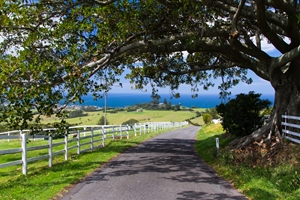 The Australian car market is very competitive. Apart from the driver’s licenses, CTP insurance and registration, selecting a vehicle to suit your requirements is easier said than done.
The Australian car market is very competitive. Apart from the driver’s licenses, CTP insurance and registration, selecting a vehicle to suit your requirements is easier said than done.
However, this process is about to get a lot simpler with the announcement of this year’s finalists for Australia’s Best Cars Awards. Across 15 categories, 45 finalists have been whittled down from a mammoth 220 contenders.
 Australians are known for our laid back demeanour and appetite for adventure. With a country as vast and varied – from spectacular desert settings to sub-tropical rainforests, there is plenty to see and do in just a day.
Australians are known for our laid back demeanour and appetite for adventure. With a country as vast and varied – from spectacular desert settings to sub-tropical rainforests, there is plenty to see and do in just a day. The thought of a computer operating your car while you sit back sounds like something you would read about in a science fiction novel. However, driverless cars are already being experimented with in Japan and could very well replace human drivers within the next decade or two. The notion of driverless cars sounds appealing; a computer, after all, is not prone to human negligence or making potentially fatal errors in judgment, such as getting behind the wheel intoxicated or texting while on the road.
The thought of a computer operating your car while you sit back sounds like something you would read about in a science fiction novel. However, driverless cars are already being experimented with in Japan and could very well replace human drivers within the next decade or two. The notion of driverless cars sounds appealing; a computer, after all, is not prone to human negligence or making potentially fatal errors in judgment, such as getting behind the wheel intoxicated or texting while on the road. For a number of months, the Australian car market has been struggling under the weight of poor consumer confidence. However, a recent announcement from the Federal Chamber of Automotive Industries (FCAI) suggests the market is beginning to move in the right direction.
For a number of months, the Australian car market has been struggling under the weight of poor consumer confidence. However, a recent announcement from the Federal Chamber of Automotive Industries (FCAI) suggests the market is beginning to move in the right direction.